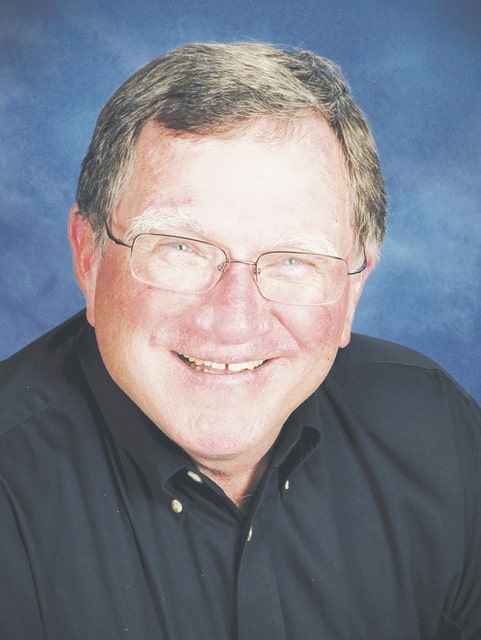

Sitting in a lawn chair on Saturday night, looking up into the dark of night, we watched as the rockets soared into the smoke-filled sky and then exploded into color, swirls, crackles and more explosions. It was the exciting beauty we have all come to associate with July the Fourth fireworks.
I could not help but think back to other July Fourth celebrations over the past 30 years.
The Wilmington Optimist Club organized the entire Independence Day celebration from the mid-1970s until the club disbanded about 30 years later. We used to hire a licensed fireworks exhibitor to lead us through the setting up and shooting of the display. By Ohio law, you always had to have a licensed exhibitor on site.
Several members of the Optimist Club were always on hand to provide labor and to support the licensed professionals. Donnie Maher headed up the Optimist Club fireworks crew.
One year, the licensed, professional, pyrotechnical expert we hired showed up in the mid-afternoon reeking of alcohol and sporting a fresh bandage over two missing fingers of his left hand. This happened long before the strict standards of safety and security established by the State Fire Marshal, the Bureau of Alcohol Tobacco Firearms and the Department of Homeland Security; standards that were mandated following the September 11 terrorist attacks.
On this long-ago July Fourth, Donnie took control of the entire scene. He grounded the tipsy, wounded expert and put his Optimist crew to work preparing and shooting the entire show. Later that year, Donnie went to the state fire marshal’s office in Reynoldsburg, where he took his exam and became a licensed pyrotechnics exhibitor. We no longer had to rely on outside help — particularly, not the boozed up, semi-fingerless “experts” that were then available.
The following year, I took my pyrotechnics exhibitors test and for the next many years, I helped Donnie organize and shoot the July Fourth show. We were a good team; checking and double-checking each other for safety. We had a few interesting moments (close calls), but no one ever got hurt at any of our shows.
Over time, we put together a team of people who really liked shooting fireworks, but who took safety seriously. Many of those team members are still shooting fireworks today. My brother-in-law, Alton Hadley, now heads the team.
However, no one enjoyed shooting fireworks more than Roger Conger.
Roger was a Vietnam War veteran. To put it bluntly, Roger just loved blowing things up.
At the time, he was a Lieutenant with the Wilmington Fire Department. He was WFD Unit 34. Roger was one of those cool-headed men who rarely got excited in the most trying of conditions. When others would be scrambling around getting prepared to fight a large fire, Roger would calmly prepare himself and walk to the structure with the tools he needed, enter the building and start putting out the fire. People who followed Roger’s example became excellent firefighters.
He was also a valued and much loved member of the Optimists’ fireworks crew.
Fireworks are rated by their diameter. The smallest aerial shells used at the typical fireworks show are 3-inch shells. The largest are usually 6-inch shells. Occasionally, we would slip in a few 8-inch shells that really light up the night sky. The bigger the shell, the better Roger liked it.
One year, we collected some extra money and bought a 12-inch shell. It looked like a Butterball turkey. It was huge. Out of respect, we decided to let Roger shoot the mega-shell as the final shot of the night’s finale.
At that time, by law, you could only light a 12-inch shell using what is called a squib. A squib is an electronic firing device. It is attached to the end of a wire that is threaded into the fuse of the shell and attached to a battery. This way the fireworks shell can be fired remotely instead of lighting the fuse by hand with a road flare, as we normally did.
When Roger showed up that afternoon, we all started calling him “Squib.” After about the 10th time of hearing himself referred to as Squib, Roger asked what the heck we were doing. I walked him over and showed him the 12-inch shell that was loaded and ready for him to light. Roger, for once in his life, was speechless.
At the end of the show, he waited until we were all ready, then Roger “The Squib” Conger walked up to the massive shell, lit it and slowly started walking away. He didn’t even watch it take off. He just walked toward the rest of the fireworks crew, smiling from ear to ear. That fireworks shell lit up the entire sky, but Roger’s smile was brighter.
Roger died on April 10, 2005 after a short, bitter fight with cancer. He was only 63-years old. At the time of his death, he was the assistant chief of the Wilmington Fire Department. He was loved and respected by everyone he met. Even today, every Wilmington firefighter comes to work wearing a black patch with a green shamrock and the number 34 sewn onto the patch. Ten years after his death, they still do this to honor Roger.
On July Fourth 2005, we bought another 12-inch shell. Every member of the Optimist Fireworks crew signed the shell and wrote a message telling Roger how much we missed him. That was our final salute to our friend, Roger.
I still can’t watch a fireworks show without thinking about Roger Conger.
Randy Riley is Mayor of Wilmington.

